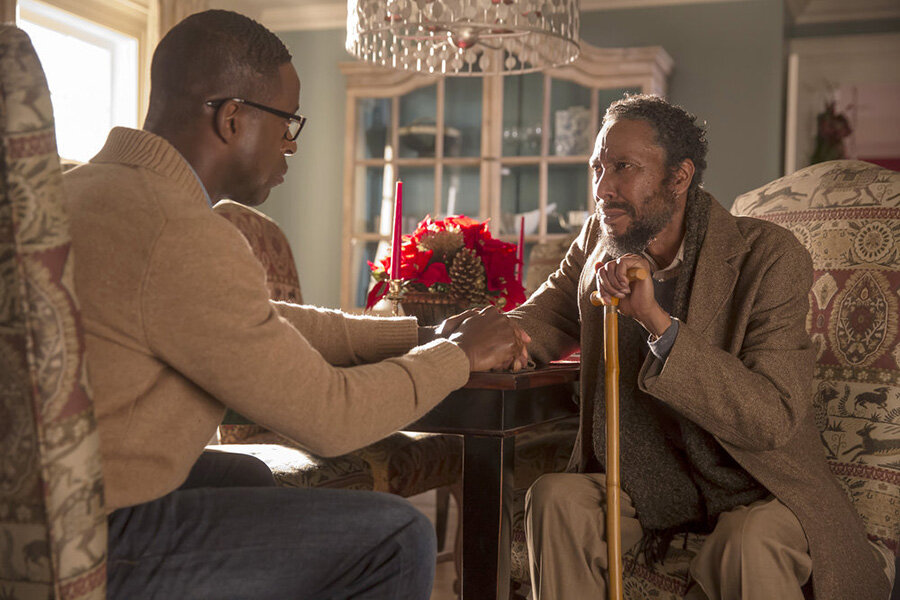'This Is Us,' praised for adoption depiction, continues story of son and birth father
Loading...
The latest episode of the hit NBC drama “This Is Us” included a road trip with a man (Sterling K. Brown) and his birth father (Ron Cephas Jones), the latest development in a plotline about adoption that has drawn praise from some critics, adoptive parents, and those who were adopted themselves.
“Us” tells the story of a family, depicting the lives of two parents (Milo Ventimiglia and Mandy Moore) and their three children, from the children’s births in 1980 to their lives in the present day. One of those children is Randall (Brown), who was adopted by parents Jack and Rebecca after his birth father, William (Jones), left him at a fire station.
The first episode of the show included Randall tracking down his birth father. Subsequent installments have shown William, who has been diagnosed with cancer, becoming part of Randall’s family.
(Spoilers follow for the latest episode of “Us”…)
The newest episode included Randall and William driving to Memphis, Tenn., William's birthplace. Their time there included Randall meeting his and William’s extended family.
“Us” has been the subject of praise from some who know adoption well, in terms of how it depicts the complex relationships and feelings many families experience.
Author Lorilee Craker, who writes that she herself was adopted and adopted some of her children, wrote of the show, “Never have I felt so compelled by the adoption insights in a TV show – never!”
Ms. Craker wrote of Randall’s feelings, “Randall’s eagerness (really, hunger) to have a relationship with his birth father, to be seen and acknowledged as the child once abandoned, is authentic. We sense as viewers that he will do anything to make this weird situation work – anything. I see myself and other adoptees in his heartbreaking vulnerability and keenness, and it rings true to the bone.”
Meanwhile, writer Lisa Qualls, who blogs about adoption and parenthood, wrote on her site, “As an adoptive mom and birth/first mom, I’m very critical of movies and shows that attempt to tackle the subject of adoption. It’s nearly never done well. ‘This is Us’ is the exception to the rule.”
Vulture writer Rebecca Carroll, a black woman who was adopted into a white family, has shared her thoughts on how the show portrays the complex identities of children in interracial adoptions.
Of meeting her own birth father, Ms. Carroll wrote, “Even though I couldn’t immediately relate to this man who stood in front of me … I couldn’t turn away, just like Randall when he tried to leave his father’s apartment. Rather, Randall turns and says, as if the words just fell out of his mouth: ‘Want to meet your grandchildren?’ That’s what the pull feels like: a marrow-deep draw that is simultaneously familiar and foreign.”
“There are glimmers of honesty on the show, too, in watching the flashback scenes, where Rebecca and Jack struggle with how to raise a kid of a different race,” Carroll adds, citing examples like Randall's hair cuts. But as challenging as such practical questions can be, “more important is access to the language and legacy,” she writes, as adopted children try to reconcile “a racial identity in a family that represents the default framework of a country that has historically hated us.”








